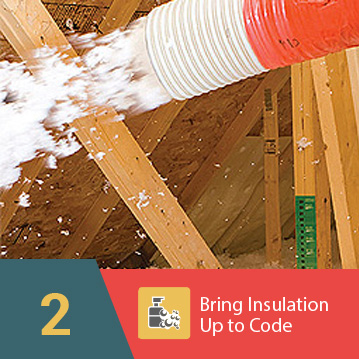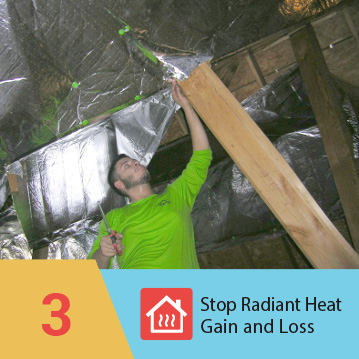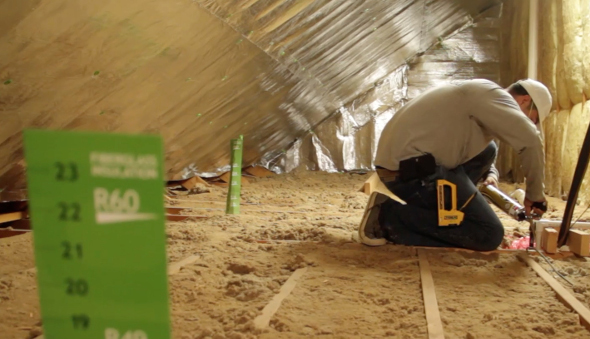Attic Air Sealing
If you haven’t done it yet, it’s now time to climb into your attic and plug up as many holes as you can find. If you want to improve the energy performance of a much older house, one of the first steps to take is to plug any attic air leaks. These include the gaps around plumbing pipes, light fixtures, chimneys and other attic bypasses that are hidden underneath the insulation.
4 Basics to Air Sealing:
- Inspecting your attic
- Patching the big holes
- Sealing the cracks and small holes
- Weatherstripping the access hatch
Inspecting your attic
The easiest way to find air leaks is with a blower door. In some cases, a theatrical fog machine is also very useful.
If you don’t have a blower door, you’ll have to find your attic air leaks using your eyes and your powers of deduction. You’ll also need a powerful flashlight. If you don’t like balancing on joists, bring a couple of 2 ft. by 3 ft. pieces of plywood to step on while inspecting your attic. Needless to say, you don’t want to step between the floor joists and punch a hole in the ceiling.
Warning: if your attic floor is insulated with vermiculite, a type of insulation that may contain asbestos, don't touch the insulation. Don't attempt any air sealing work in an attic insulated with vermiculite. Removal of vermiculite insulation should only be performed by a certified asbestos abatement contractor.
If your attic has no vermiculite, the first step is to get your bearings and look around the entire attic. You may be surprised at what you discover. Needless to say, these defects will need to be remedied. The first order of business, however, is to seal the air leaks.
Patching the big holes
Big holes in your attic floor — holes above soffits, dropped ceilings, and utility chases — can be patched with gypsum drywall, plywood, or OSB. Perhaps the easiest material to use, however, is foil-faced polyisocyanurate, since it’s easy to cut and easy to tape.
Whatever type of sheet material you use to seal your large holes, cut a piece of material so that it covers the hole, and secure it in place with nails or screws. The perimeter of each piece of material can be sealed with caulk, non-hardening acoustical sealant, or canned spray foam.
Sealing cracks and small holes
Here are some of the cracks and small holes that need to be sealed in a typical attic:
Cracks near recessed can lights. Recessed can lights are bad news; most are responsible for very significant air leaks. The best solution to the can light problem is to permanently remove the can lights and replace them with surface-mounted fixtures. If you aren’t willing to do that, you may be able to install airtight covers on the attic side of the recessed cans to reduce air leakage.
Cracks around ceiling-mounted duct boots. If your house has ceiling-mounted HVAC diffusers or grilles, then you’ll need to seal the crack between the galvanized duct boots and the ceiling drywall. It’s usually easier to seal these cracks from below than from above.
Cracks around bath exhaust fans. Most ceiling-mounted bath fans have a removable plastic grille. Remove the grille from below and caulk the crack between the fan housing and the drywall.
Cracks around plumbing vent pipes. These cracks need to be sealed with caulk or acoustical sealant; some builders prefer to use European air-sealing tapes.
Leaks at ceiling electrical boxes. These leaks are fairly straightforward to seal. Using caulk, seal the crack between the electrical box and the ceiling drywall. Then seal around the knockouts at the sides and back of the box, as well as any location where electrical cables enter the box. Don’t make the mistake of filling the box with canned spray foam — that would be a code violation and would create a fire hazard.
Holes drilled in top plates for electrical cable. Again, these leaks are fairly straightforward. Seal them with caulk or canned spray foam.
Here at eShield, we are committed to helping you increase the energy efficiency of your home with our full line of attic insulation products and services, from saving you money to helping you attain the perfect attic insulation system. Don’t hesitate to contact us at 866-978-9170 today.





